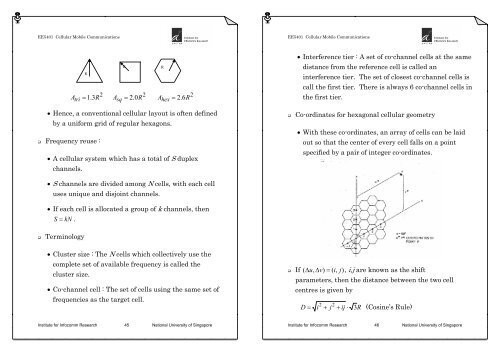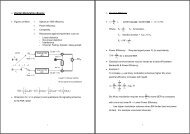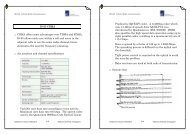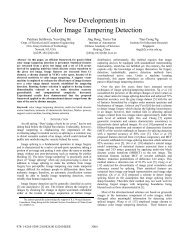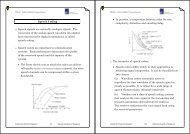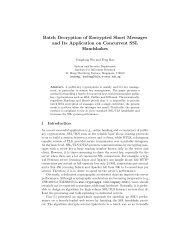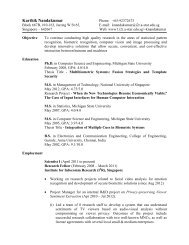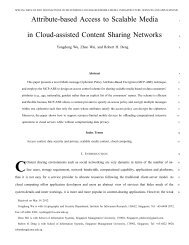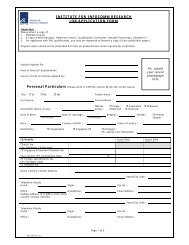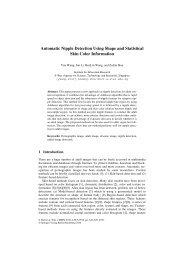Cellular Systems Cellular Concepts The cellular concept was a ...
Cellular Systems Cellular Concepts The cellular concept was a ...
Cellular Systems Cellular Concepts The cellular concept was a ...
You also want an ePaper? Increase the reach of your titles
YUMPU automatically turns print PDFs into web optimized ePapers that Google loves.
EE5401 <strong>Cellular</strong> Mobile Communications<br />
EE5401 <strong>Cellular</strong> Mobile Communications<br />
R<br />
R<br />
R<br />
2<br />
2<br />
2<br />
Atri = 1.3R<br />
Asq<br />
= 2.0R<br />
Ahex<br />
= 2.6R<br />
• Interference tier : A set of co-channel cells at the same<br />
distance from the reference cell is called an<br />
interference tier. <strong>The</strong> set of closest co-channel cells is<br />
call the first tier. <strong>The</strong>re is always 6 co-channel cells in<br />
the first tier.<br />
• Hence, a conventional <strong>cellular</strong> layout is often defined<br />
by a uniform grid of regular hexagons.<br />
Frequency reuse :<br />
• A <strong>cellular</strong> system which has a total of S duplex<br />
channels.<br />
• S channels are divided among N cells, with each cell<br />
uses unique and disjoint channels.<br />
• If each cell is allocated a group of k channels, then<br />
S = kN .<br />
<br />
Co-ordinates for hexagonal <strong>cellular</strong> geometry<br />
• With these co-ordinates, an array of cells can be laid<br />
out so that the center of every cell falls on a point<br />
specified by a pair of integer co-ordinates.<br />
<br />
Terminology<br />
• Cluster size : <strong>The</strong> N cells which collectively use the<br />
complete set of available frequency is called the<br />
cluster size.<br />
• Co-channel cell : <strong>The</strong> set of cells using the same set of<br />
frequencies as the target cell.<br />
If ( ∆ u , ∆v)<br />
= ( i,<br />
j)<br />
, i,j are known as the shift<br />
parameters, then the distance between the two cell<br />
centres is given by<br />
2<br />
2<br />
D = i + j + ij ⋅ 3R<br />
(Cosine’s Rule)<br />
Institute for Infocomm Research 45 National University of Singapore<br />
Institute for Infocomm Research 46 National University of Singapore


